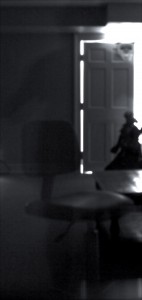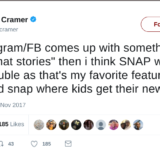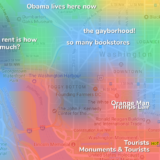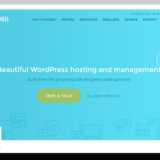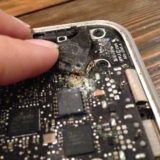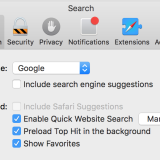How To Make Realistic Ghost Photos With No Special Effects Skills- Tutorial
Who here has watched one of those ghost hunting shows? Come on, and admit it Mr.science. You like watching them flaunt their cool gadgets to prove mythical creatures. And how about those creepy pictures in the dark where they’re walking through furniture? Want to know how to do that? I’ll teach you how to do that with only a camera and yourself. SCARE YOUR FRIENDS.
What You’ll Need:
- A dark room. Not a photographic “dark room” but rather a room with very little light
- DSLR, superzoom, or other large sensor digital camera with controllable shutter speed
- Piece of Furniture
- Ghostly Costume- because ghosts from the 50s didn’t where Nike t-shirts and jeans
- Free Photo Editing Software. Even programs like iPhoto will work for this
- Rudimentary Knowledge of how to operate said camera
- Flashlight
Top Tip:
To make it extra scary, include a detailed background behind your scene, such as a poster. The poster will be visible through the person, giving them a further ghostly appearance.
Steps to make your ghost photo:
- Put on your costume. Be creative. I created a lab setup and put on a lab coat I had from last halloween and a creepy wig.
- Set up your camera on a tripod. With long exposures, the worst thing you can do is let your camera shake. If you don’t have a tripod, at least set your camera up on a solid flat surface.
- Focus your lens. Autofocus doesn’t work in the dark, so you’ve got to focus manually before you turn out the lights.
- Further configure your camera. Automatic ISO is best, and you’re going to want a shutter speed of at least 15 seconds. Most DSLRs max out timed shutters at 30 seconds.
- Put your furniture in the shot. Scout out a place where you can quickly hide it.
- Turn out the lights. Use your flashlight to navigate and find the shutter. Turn the flashlight out BEFORE you turn on the shutter. For a cool fog effect, leave the door open a crack for a tiny bit of light leak. Be careful not to let too much in though, or it could ruin your image.
- Start the shutter. A.K.A Click the photo-taking button on your camera.
- Stay out of the shot and count out half of your shutter speed. For example, if I shoot at 30 second exposure, I’m going to count to 15.
- After getting halfway through. Run to where your furniture is, push it out of the view of the camera, and pose for the remaining 12-15 seconds until the shutter closes.
- Review your shot to make sure you got it.
- Load your shot into your photo editing software.
- Increase the brightness just a tad, and crop it to crop out unnecessary areas of the room. Even the automatic optimization tool iPhoto will fix your photo enough in a single click to make it clear and scary.
- Share your photo and scare your friends.
How this works.
Your camera sees you in its’ sensor for the last 15 seconds, and your furniture for the first 15 seconds. It essentially blends you with the furniture, and fades you naturally based on how long you’re in the photo, while the background is solid. This is similar to the principle behind the blur of fast-moving people in timelapses of streets.
The lack of light does two things: It gives you a darker, ghostlier appearance, and it prevents the image from being overexposed. Remember that ever 1/1000 of a second that your shutter is open, it’s exposed to light, and long shutter speeds without the right equipment in even dim daylight can completely overexpose it, and make it one indistinguishable white blob.
Are you going to give it a try?

